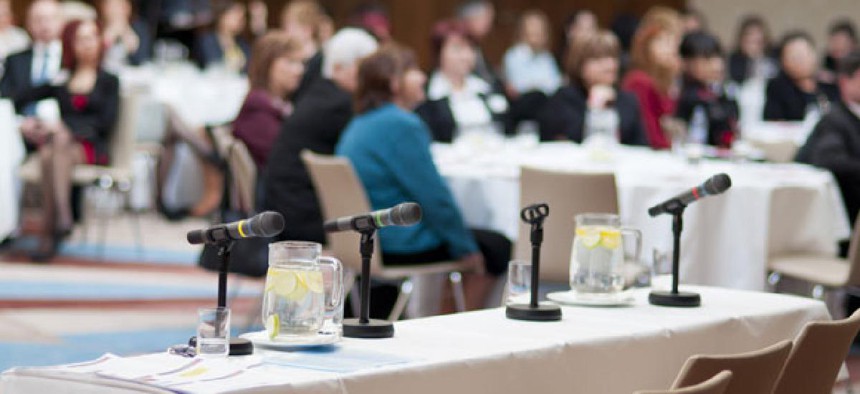
Pojoslaw/Shutterstock.com
New Conference Spending Guidance Discourages Lavish 'Social Components'
Document recognizes need for in-person events, but outlines no-frills approach.
At a time when overspending on agency conferences continues to make headlines, the Obama administration has fleshed out its guidance to help event planners balance mission needs with cost-cutting imperatives, assuring employees that it has not called for a moratorium on professional gatherings.
“As each agency reviews its travel and conference-related activities, it is critical for each agency to continue to recognize the important role that mission-related travel and conferences can often play in government operations,” the Office of Management and Budget said in an “alert” to chief financial officers dated May 28 and posted June 3. “Given the unique travel and conference needs of each agency, there are circumstances in which physical collocation is necessary to complete the mission.”
The guidance builds on a May 2012 OMB memorandum that required a 30 percent reduction in travel costs from 2010 levels through 2016; set up new internal controls that require senior management approval of conferences above a certain threshold; and required public reporting of conferences costing more than $100,000.
OMB has since worked the American Society of Association Executives on more-detailed protocols and best practices, among them that “events should not include excessive or lavish social components,” the new guidance says.
“As a first step in conference planning, an agency should confirm that physical collocation of federal employees in a conference setting is a necessary and cost-effective means to carry out the agency’s mission (and that other, lower-cost options, such as videoconferencing, have been explored),” the guidance says. It directs that:
- Hotel costs be within government guidelines for per diem rates as determined by the General Services Administration;
- Federal travelers consider both non-contract and contract airfare to ensure travel is booked and ticketed in a manner that will result in the lowest total trip cost;
- Conference and training fees follow Federal Acquisition Regulation guidelines for purchases of the activities involved;
- Agencies inquire about the availability of a “no-frills” pricing option from event organizers;
- Conferences not be considered training events absent a written justification by an appropriate official that specifies the learning objectives and mission or job performance outcomes; and that
- Agencies report the costs and contracting procedures for any government conference exceeding $100,000 to their agency’s inspector general’s office, as required by Congress earlier this year.
Such reporting must include the purpose of the conference; the number of participants; and a detailed cost statement that includes costs of food or beverages; audio-visual services; and employee or contractor travel to and from the conference. Over the long term, the memo said, “agencies and related stakeholders should anticipate a continued reduction in conference and travel activity for the duration of the sequestration order.”
Chris Vest, director of public policy for the ASAE, told Government Executive that the “ASAE was pleased to work with the administration to create a set of best practices increasing the likelihood that federal agencies can send employees to mission-related meetings and conferences. While we certainly support the government’s emphasis on responsible spending and accountability to taxpayers, we do believe there is tremendous value in face-to-face meetings. The dialogue and knowledge-sharing that takes place at these conferences is critical in many cases to the development of informed policymaking and mutual understanding between government and the private sector.”
(Image via Pojoslaw/Shutterstock.com)







